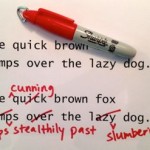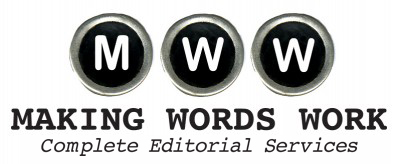 When you search the Internet for images related to “writing and editing,” you’ll find photos and graphics depicting words, typed or hand-written on paper, with cross-outs, underlines, and arrows dancing across the page like a bright red spider web. These images make me smile.
When you search the Internet for images related to “writing and editing,” you’ll find photos and graphics depicting words, typed or hand-written on paper, with cross-outs, underlines, and arrows dancing across the page like a bright red spider web. These images make me smile.
In this day and age, there just aren’t that many of us who use a pen and paper to write or edit. Case in point: I’m typing this blog post on my computer, and editing it as I go. When I edited a client’s website copy recently, she emailed it to me as a Word document, and I pruned the prose with my keyboard, not a pencil. Granted, I always print the final draft to read on paper; for me, there’s something about the black ink on a white paper page that makes an added space or a missed comma easier to spot.
I find it reassuring that, despite the dominance of computers and screens in so many aspects of our lives, Google offers up these “old-fashioned,” iconic images to visually describe writing and editing. (By the way, a search for “telephones” and “phones” brings up far more images of traditional phones – you know, the ones with a handset—than of iPhones and the like.) Of course, I’m as grateful as the next person that technology has made so many aspects of our lives faster, easier, and more efficient than ever before (Google maps, anyone?). But spell-checks aside, for me, it’s heartening to think that writing and editing is still, in its essence, considered a “manual” process that just can’t be automated. Computers may be increasingly flexible in their algorithms and computations, but they have yet to figure out – let alone master–the intuitive skill of crafting good writing. Human editors and writers still reign supreme in that realm. I suspect – and hope – that it will stay that way for a long time to come.

